The Gaelic Athletic Association Part IV - Handball
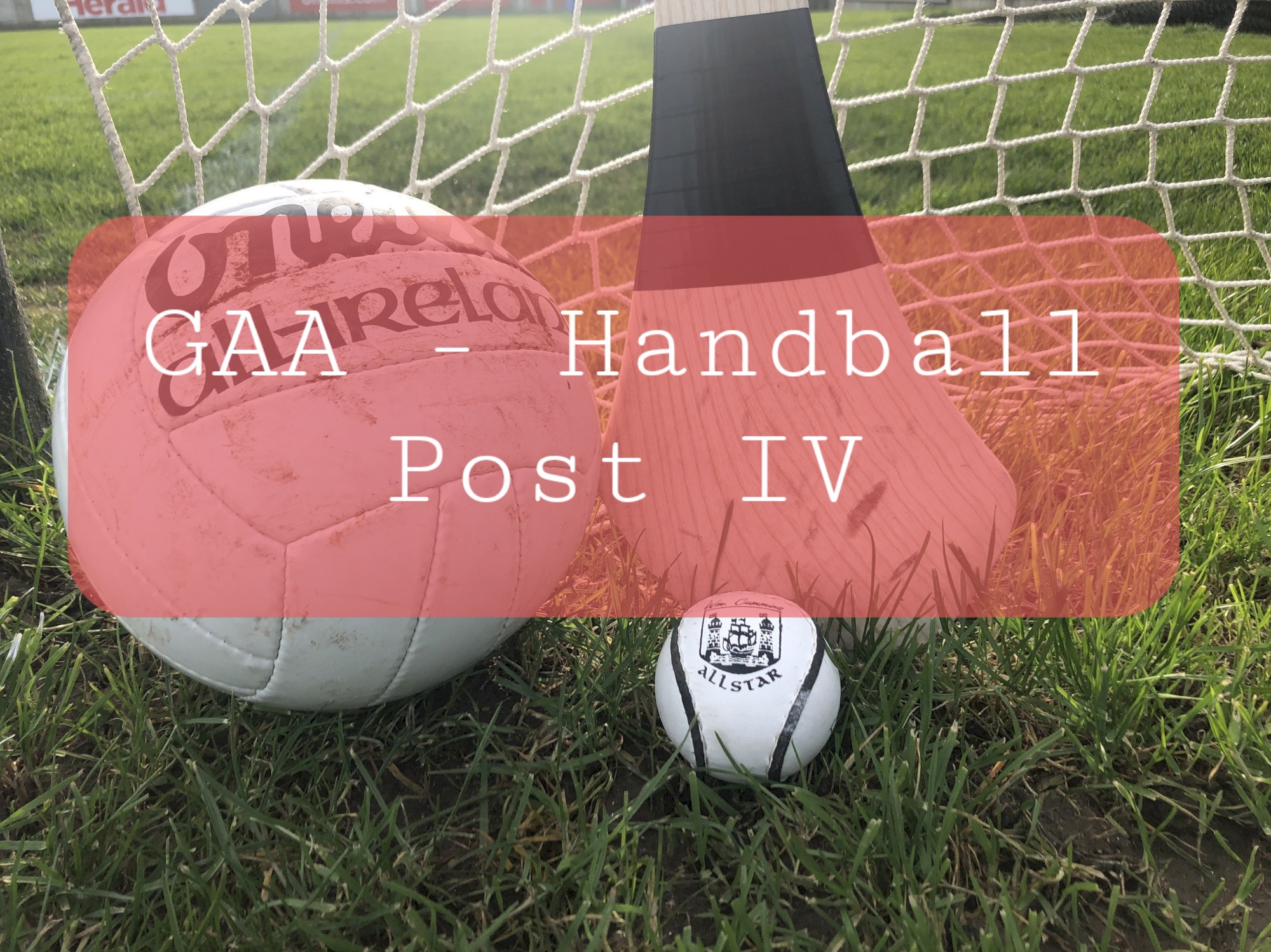
OK, so anyone reading this fourth GAA post and who didn't read the other three, may be wondering what in the name of Maura the GAA or Gaelic Athletic Association. In a nutshell the GAA is a foundation that was founded in Ireland back in 1884 to preserve the traditional Irish sports and traditions that were slowly eroding away for a number of reasons that I won't get into here. Should you want to read about it, you'll find a link to "PART I - History of the GAA" below and you can learn all about it. For me personally, knowing the history of these sports makes me proud to have played them and now my playing them as well. Every little town, village and cross roads on the island of Ireland has a GAA club that the people of the the local hinterland play for, watch or support throughout the year and the best players from each club within each of the 32 counties are selected to represent their counties in the All Ireland inter county leagues and championships across Hurling, Gaelic Football and Handball. I have already written lengthy posts on Hurling and Gaelic Football, so today's post will focus on handball and will be the last post in the series.
I broke it up into four sections, as the subject of the GAA is so broad. This meant that I always shyed away from covering it in a post before. To write too long a post would put many people off reading it all and to write too short a post would fail to do justice to a fantastic organisation and its unique sports. So, as I said, in the end, I decided to break it up into four separate parts I through IV as shown below allowing me to write detailed posts on the history and each of the three sports that fall under the umbrella of the GAA. This week's post is about arguably the least well known of the three sports which fall under the banner of the GAA.

%20(3).jpeg)

PART IV - Handball
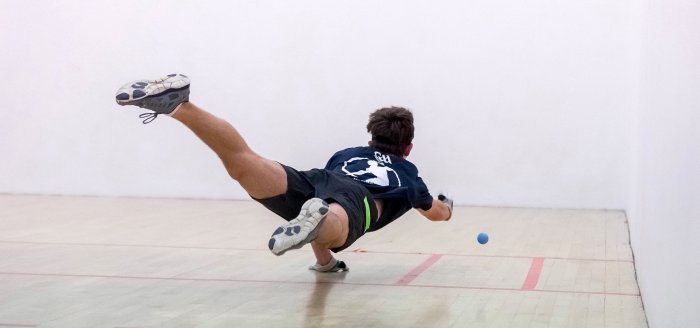
What is Handball?
Although not as well known as Gaelic Football and Hurling, Handball is also very popular in some areas of Ireland and since its foundation in 1884, the charter of the Gaelic Athletic Association has included handball as one of the sports to be promoted by the association. In 1924, the "Irish Handball Council" (rebranded as GAA Handball in 2009) was established to promote and develop the game.
The game was a lot more popular in the early days and enjoyed a revival in the 50s, 60s and 70s, but went into decline again as other sports began to dominate. Since the rebranding in 2009, more funds have been pumped into handball and it is once again enjoying a resurgence which is great to see. An important way to develop a sport is though getting youngsters involved and to that end the GAA introduced the One Wall code to many schools around the country and several hundred one-wall courts have been built in schools across Ireland.
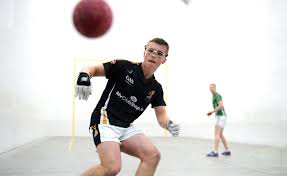
Handball Codes
Before getting onto handball rules, it is important to understand the handball codes. I will explain the 4 different codes below.
One-Wall One-Wall I suppose does exactly what it says on the tin and the answer is in the name. It is played against a single wall. The wall is 20ft x 16ft in surface area and has court lines marked out on both the wall and floor. It is played with a soft rubber ball and can be played both indoors and outdoors, making it a game for all seasons. One-Wall Handball or 'Wallball' as it is often called is the fastest growing code of the game, and the 2019 Irish Wallball Nationals tournament attracted four hundred entries, which is a great sign for the game.
Four-Wall is another code of handball and is also known as small alley. Four-wall is played indoors and again as the name suggests it is played within four walls. The dimensions are 40 ft x 20 ft. It is played with a smaller but slightly harder rubber ball compared to one-wall balls and is the fastest ball used across the four codes. The roof is actually an area of play in four-wall, unlike the other codes of handball and fourwall is played in many other countries around the world and there is even a US Semi-Professional Tour and World Championships which are held every three years and are the ones that everyone wants to win.

Softball is yet another code and is really only played in Ireland and would not be as popular as the other codes. It is also known as Big Alley due to the larger playing area which has dimensions of 60ft x 30ft. Softball as the name suggests uses a small 'softball' rubber ball.
Hardball is the exact same as softball, except that it is played with a harder ball. It is played in the same court as Softball, but as the name suggests, with a much harder 'hardball' ball. Hardball is the game you will see randomers playing in ball alleys around the countryside and is the original version of handball that was handed down through ages (excuse the pun!)
Handball Rules
I wont re-invent the wheel here, instead, I'll just share the rules as outlined on the GAA Handball website:
General
- The ball must be returned before it
bounces twice for a rally to continue
• Only the palm of the hand or fist can be
used to strike the ball
• When attempting to return a shot, the
ball must only be touched once, and
with one hand only - During play, after the ball is hit, it
must strike the front wall before
hitting the floor. The ball may strike
the sidewalls, roof or back wall before
it strikes the front wall.
•If the handball hits your opponent
before it bounces, or if a player is
obstructed, then the point is replayed - Matches are played as the best of
three sets:
• Adult Games = 2 x 21pts & tiebreak to
11pts (if required)
•Juvenile Games = 2 x 15pts & tiebreak
to 11pts (if required) - Timeouts are of one-minute duration
• 3 x timeouts per game to 21 points
• 2 x second timeouts per game to 15/11
points
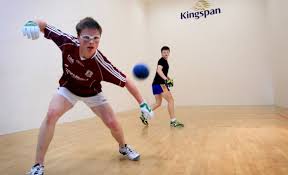
Serving:
- Players must serve, and win the rally
before they can score a point. - When serving, the player must stand in
between the service lines, and serve the
ball over the short line (the second line
from the front wall).
• When serving, players must bounce the
ball before they strike it, and the served
ball must always hit the front wall first,
otherwise the player loses their serve
• A serving fault occurs when the ball is
served:
Short - Ball bounce before or on the
short line
Long - Ball hits back wall before
bouncing on the floor
Roof – Ball hits the roof before
bouncing on the floor
3 Wall – Ball hits three walls before
bouncing on the floor
• Players are allowed a second serve
when the ball is served Short, Long,
Roof, or 3 Wall.
Doubles:
(Note these rules do not exist in Singles)
- When playing doubles, teams take it in
turn to strike the ball (either player in the
partnership can hit the ball). - When serving, each player in the
partnership will serve until a handout
occurs for each player. - When a player is serving, their
partner must stand inside either the left
or right serving box until the ball
is served.
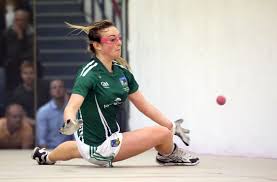
That's a wrap
That's the end of the story of GAA. I hope you enjoyed learning about it over the past few weeks and thanks for reading and engaging along the way.
The photos used throughout this post are not my own and were sourced here:
https://www.businessinsider.com/irish-gaelic-football-nfl-2015-9?amp
https://www.gaahandball.ie/about/about-gaa-handball
https://www.gaahandball.ie/news/junior-nationals-qualifier-draws
https://www.gaahandball.ie/news/2016-40x20-irish-junior-nationals-entry-info
https://www.gaahandball.ie/about/about-gaa-handball

It's like squash without the racquets!
Whenever I've played squash it's been a surprisingly physical game. Is handball the same?
Ya, nail on the head man, it's very like squash and that's a big part of handball falling in popularity in the 80s and 90s as many switched to squash and racquetball.
And ya it's a great workout and you'll be breaking a sweat as quick as any game.
Looks super nuts and have never seen it before. Like a poor mans squash game as no racquets required lol.
Ha ha, good description in saying "poor man's squash"
That was pretty much it, as the majority of Irish people did not have much money back in the day, so spending money on racquets was not a runner. The balls used in many sports were often improvised too and not an official ball bought in a shop.
Really that sports calls Handball?
because in the rest of the world Handball it is a complete different sport.
Good shout out. The other handball you are talking about is called Olympic handball in Ireland 👍
Ah ok nice.
I learned one more thing. I asked that because I play "Olympic handball"
Ah very good, yes I played Olympic handball as well back in my primary school days.. It's a great sport, I used to love jumping into the air near the goal and unleashing shots.
Thanks for the post. Very interesting :)
Thanks for stopping by.